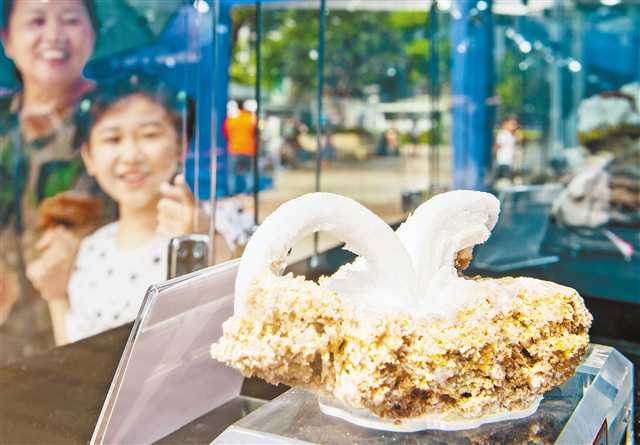Chongqing News
Let’s see what Chongqing looks like 400 million years ago through these remarkable mineral and stone materials
2023-09-19 15:13:28

CHONGQING (CQNEWS) -- To celebrate the National Science Popularization Day for 2023, a geological science popularization activity was held in Guanyinqiao, Jiangbei District on September 16. Over 40 types of ore specimens, more than ten kinds of ornamental stones, VR experiences, and popular science exhibition boards in the event attract a large number of visitors to explore the geological mysteries of Chongqing.
"Why are there various patterns on this stone slab?" When the 10-year-old primary school student Tong Shiyun went shopping with her mother, she was attracted by an ore specimen displayed at the event.
“It’s not an ordinary stone. It’s called Haibaoyu Marble, which was formed about 400 million years ago and found in Chengkou County,” said Li Delong, an engineer from Nanjiang Geology of Chongqing Bureau of Geology and Minerals Exploration. She added this type of ore is the Hanjiadian Crinoidea bioclastic limestone in the Silurian Period.
The pattern that Shiyun saw is the Crinoidea formed in the Silurian Period. At that time, Chengkou was an ocean. After years of natural changes, Chengkou has become a mountainous city with its marine organisms turning into fossils, part of the ore.
There are many other kinds of ore specimens in the event, such as iron ore, coal, calcite, and barite. These specimens come with professional magnifying glasses so that visitors can get a glimpse of the details of the ore surface.
Most of the exhibited ore specimens are found in Chongqing. So far, Chongqing has discovered over 70 types of minerals and identified 44 types of mineral resources. The predominant minerals of Chongqing include shale gas, natural gas, geothermal, manganese, bauxite, strontium, barium carbonate, and barite. Manganese and bauxite have been included in the mineral species for the new national strategic mineral searching action.
This science popularization activity is hosted by the Chongqing Bureau of Geology and Minerals Exploration and co-organized by the Jiangbei Association for Science and Technology and the Association for Science and Technology of Chongqing Bureau of Geology and Minerals Exploration. (Translated by Yuki, Fathom Language Limited)
Editor:Jiang Yiwei
 手机阅读分享话题
手机阅读分享话题